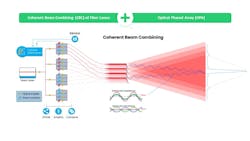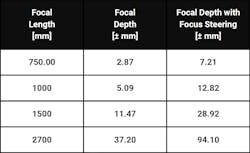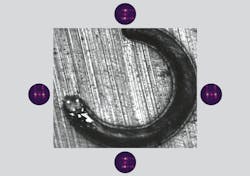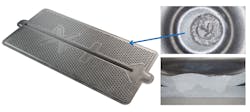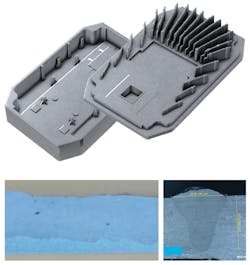Galvo scanners and dynamic beam lasers
In today’s world of manufacturing, speed is a key factor in producing new products. This is where galvo scanners come into play, providing a common method for laser welding and metal additive manufacturing. These scanners allow the laser beam to move in high feed rates and complex geometries, providing manufacturers with greater flexibility and control over their manufacturing processes. Galvo scanners are widely used in various areas of manufacturing, including the automotive industry.
To ensure high-quality output, galvo scanners are often combined with sensors to monitor weld quality. This provides manufacturers with the ability to quickly identify and correct any issues in the manufacturing process, reduce waste, and increase productivity.
However, galvo scanners require the mechanical movement of lenses to maintain the correct focus position and complex optics to maintain the inclination angle. This complexity can make it difficult for manufacturers to use the technology to its full potential.
This is where dynamic beam laser technology comes in. This technology simplifies the use of lasers with galvo scanners, allowing for the removal of mechanical and optical parts in the scanner and replacing them with the electro-optic movement of the beam. This provides manufacturers with greater flexibility and control over their manufacturing processes necessary to efficiently produce high-quality products.
Understanding the dynamic beam laser
A dynamic beam laser (DBL) is a high-power fiber laser that generates an unlimited number of beam shapes and megahertz frequency wobble of the beam. It is based on two core technologies: coherent beam combining and optical phased array (see Fig. 1).
Coherent beam combining combines multiple single-mode laser beams into a single larger beam. Each individual laser produces its own light that intersects with other beams in the far field, generating a diffraction pattern. This approach offers the ability to alter the beam shape in real-time without requiring any moving parts, resulting in the creation of a dynamic beam laser.
The optical phased array is a method of controlling the direction of a laser beam by changing the phase of the light waves. This allows for real-time beam orientation and enables the use of asymmetric beam shapes, which is critical when welding complex geometries.
Why DBL?
The use of DBL with galvo scanners offers several advantages over traditional laser welding systems. One of the most significant benefits is the ability to use a scanner with a large focal length. Existing lasers are limited to a focal length of around 300 to 400 mm. With DBL’s high beam quality, the focal length from the scanner to the workpiece can be more than twice the distance—which creates new possibilities.
One example for using this feature is the welding of hairpins on a stator. The traditional process is time-consuming and technically challenging, requiring the stator to be moved throughout the welding process. Using a DBL, the scanner can now weld all the hairpins without moving the stator (see Fig. 2), which significantly reduces the time and effort required for this task.The process of joining die-cast aluminum parts, particularly through laser welding, is a difficult task. The casting process usually involves a significant amount of hydrogen gas entrapped in the material due to the high temperatures and pressures involved, as well as processing additive materials. When welding, this gas expands, resulting in an excessive porosity and spatter, where the former can weaken the mechanical properties of the material and reduce its overall strength. Furthermore, excessive porosity can also promote keyhole instability and collapse. Various techniques, such as magnetic fields, laser-wobble processes, and dual beam welding (via diffractive optical element), to name a few, are used to mitigate porosity with limited success since controlling the melt-pool dynamics during welding remains a challenge.
Dynamic beam lasers provide significant melt-pool control through beam shaping and tailored power distribution. Also, by stirring the beam in high frequencies, the entrapped hydrogen can flow out of the melt pool, which leads to minimum porosity and tight welds.
By using this technology, manufacturers can achieve high-quality, high-strength aluminum die-cast parts in a shorter time frame, meeting the demands of the automotive industry for lighter, stronger, and more efficient vehicles. Furthermore, the ability to produce intricate designs and shapes using the die-casting process allows for greater flexibility and innovation in the design of power electronics, which is essential in today’s rapidly evolving automotive industry.
The combination of galvo scanners and dynamic beam lasers offers a promising solution to the challenges of welding, providing manufacturers with the ability to produce high-quality parts at a faster pace and with greater efficiency, ultimately benefiting the automotive industry and consumers.
